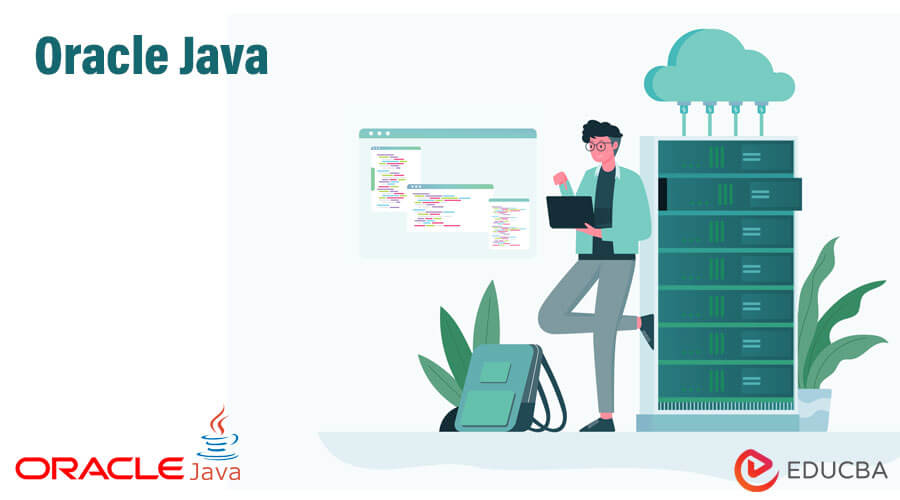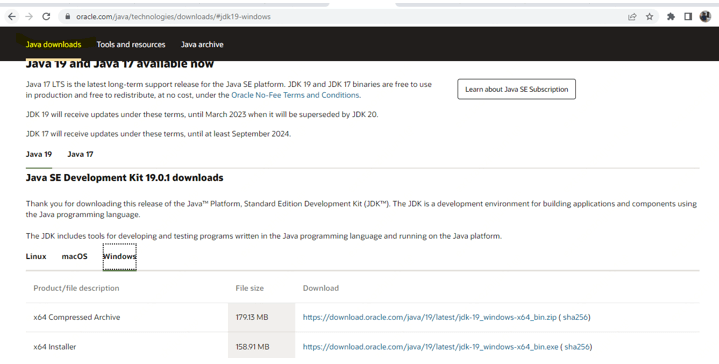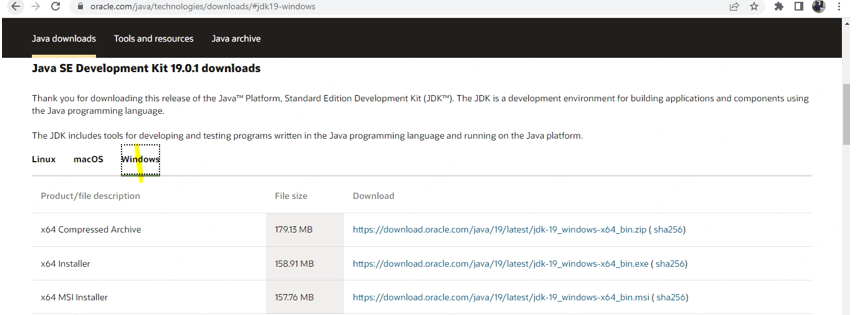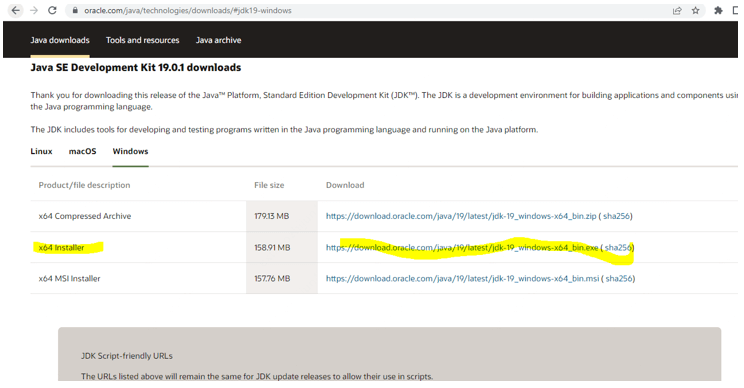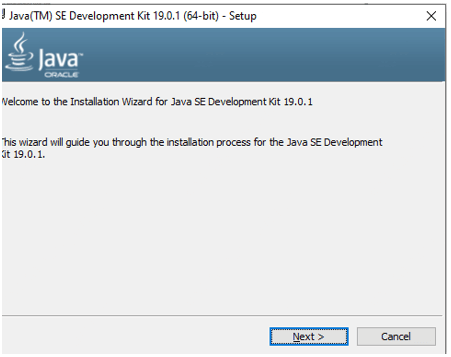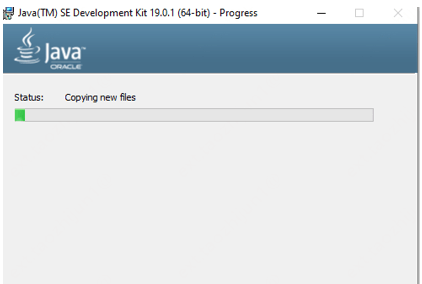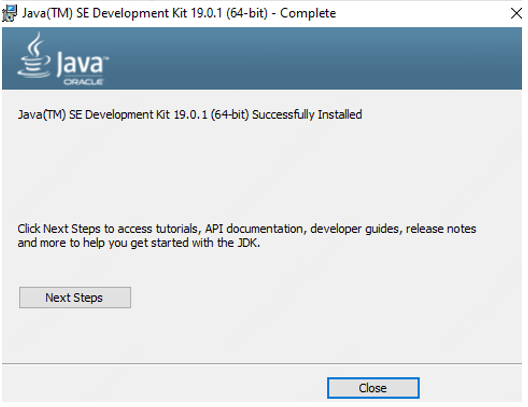Updated August 19, 2023
Introduction
Oracle Java is one of the programming languages, and it’s a frequent development platform for developing and performing software operations, including timeframes, which drives innovation. It runs through Java Virtual machine(JVM) across different services. Oracle openjdk releases help to cover the GNU[General Public License] along with classpath exceptions. there are no fee terms and conditions for all the users, enterprises, and developers for developing both standalone and web-based applications. Oracle Java is a popular choice for developers due to its scalability and ability to reuse code. Oracle offers free educational resources for new programmers, making it an attractive choice for those starting out in the industry.
Key Takeaways
- The finest platform for running Oracle Database, Java, and corporate programs in mission-critical settings remains Oracle SPARC servers.
- A variety of feature and security updates are available for each oracle version and their OS using a Continuous Delivery Model.
- Oracle’s latest versions will have extended support available through January 2021, it was announced.
- The Fujitsu SPARC M12 servers were unveiled.
- When compared to the offers of competitors, Oracle x86 servers with the most recent Intel® Xeon® processors are a unique breed of servers.
What is Oracle Java?
The Java Virtual Machine (JVM), which Oracle Java uses to execute across several services, is one of the programming languages and a regular development platform for creating and carrying out software operations, including timings. The GNU [General Public License] and the classpath exception are covered by the Oracle OpenJDK releases, which are free for all users, businesses, and developers to utilize in creating standalone and web-based applications. Oracle provides a range of Java development kits, tailored to different environments and use cases.
How to Use Oracle Java?
In comparison to Oracle Java, earlier, the license was significantly different, and it varies from the oracle technology network license agreement for Standard Edition. We can call and use it for other uses permitted by earlier oracle java licenses that might no longer be available for license permits in both personal and development usages without any charges. Thoroughly we understand and read the terms before downloading software usage it’s a reasonable price for Standard Edition Subscription, including commercial license and support. Additionally, Oracle makes the most recent openjdk releases, which are available at the jdk.java.net under the GPL open source.
Oracle Java Installation
Based on the system requirement, we should download the java jdk from the official oracle web page. Here I have a 64-bit windows machine, so I will download the 64-bit windows jdk version.
1. Navigate to below web page.
https://www.oracle.com/java/technologies/downloads/#java11-windows
2. Choose the latest java versions, here Java 17 and Java 19 are available now,
3. And also, I will choose the operating system here, I am using windows,
4. Whether we can download Installer, msi installeror compressive archive depends upon your needs you can download it.
5. Here, I will download the Installer format,
6. Once downloaded, we can click and start the installation,
7. Choose the installation as Run as Administrator after that, it shows the below screen,
8. Then press the Next button to proceed with the installation,
9. Finally, after it is successfully installed, close it.
10. And Start the Command Prompt and enter the command like java -version it displays the java version details.
Oracle Java Alternatives
There are numerous ways for going to oracle jdk alternatives that have emerged for the java community as an output result for java release, especially in oracle community changes for every release cycle and the discontinuation of free quarterly upgrades on earlier Java versions. Some of the available options on the list which exhaustive of the most common things like below,
1. AdoptOpenJDK
It is mainly offered to the free binaries, which are under the same GPL License, and it is mainly managed by the eclipse foundation on Adoptium. The TCK is certified and will share the same source code as openjdk. Hotspot and OpenJ9 are the two main type of VMs which is mainly adopted on OpenJDK. The openj9 builds are mainly supported by eclipse foundation and are supported by IBM.
2. Red Hat OpenJDK
With regular release cycle types that are covered under the openjdk builds for the following licenses.
- Linux Enterprise Red Hat
- Runtimes for Red Hat
- InfraGard Middleware
- Windows version of OpenJDK from Red Hat (for all non-Red Hat Middleware Java workloads)
It is mainly supported for major types of versions for at least a few years and are regularly contributed to the openjdk platform.
3. Microsoft
This is another manufacturer which is released with the same build on long-term support under the GPL and CE license terms. It has made openjdk release builds available and used by the general public, and the most recent versions are downloaded on java official websites.
4. Azul Platform Core
It offers Azul Zulu builds for openjdk recent version architectures, package types, and other configuration choices, which are replaced exactly at the price fraction. These factors are more contribute to the Azul platform’s core ability, which built by java industry professionals and thoroughly tested with 100% opensource Java SE standards.
5. Amazon Corretto
It’s a free and multi-platform platform that runs on the production-ready machine for openjdk release under long-term maintenance for Corretto performance improvements and security updates. Its thousands of services in production machines under the java SE compatibility certification, which is under the GPL with CPE amazon changes that have not been incorporated into respective openjdk projects.
6. SapMachine
The openjdk Sapmachine was created with the NetWeaver application stack on their builds, which is available under the GNU license format. And it also most frequently contributes to the openjdk platform.
Oracle Java Multiple Vulnerabilities
In Java Standard Edition, there are multiple types of vulnerabilities that help to develop the business on remotely hosted machines. A vulnerability in oracle java standard edition and its oracle GraalVM Enterprise Edition components. It is affected by unauthenticated attackers with network access for numerous protocols in java SE and Enterprise edition exploitable vulnerability. Successful attacks on every vulnerability could grant with unauthorized users for all oracle java enterprise edition data or crucial data by allowing for the creation, deletion, or alteration of data.
Features
Some of the oracle java features are as follows,
1. Classes
A class functions as an object function like object() that we can write the native code language. And it’s an object creation of a blueprint with the help of class keyword.
Example:
public class First{
int a =1;
}2. Objects
In Java, class is the main concept, and its mainly used to build an object, additionally now that the main class has been more established, that utilized in object generation, with the help of a new keyword and the class name, which is followed by the object name for Main method creation.
Example:
class Jan2023{
int sno;
String sname;
public static void main(String args[]){
Jan2023 j1=new Jan2023();
System.out.println(j1.sno);
System.out.println(j1.sname);
}
}3. Interfaces
It is a blueprint of class that helps to print the java interface both static constants and abstract methods are included. In Java, abstraction is accomplished by using the interface and also permitted by using abstract methods, and multiple inheritances. Like the abstract class, it cannot be instantiated.
Example:
interface Jaunary14{
void add();
}
class months implements Jaunary14{
public void add(){System.out.println("Welcome To My Domain");}
public static void main(String args[]){
months mnths = new months();
mnths.add();
}
}4. Inheritance
It’s a java mechanism that helps to find the one object which can acquire all of the parent object properties and actions through the technique. It’s a crucial component of an object-oriented programming system. The parent-child relationship, also known as the IS-A relationship, is represented by Inheritance.
Example:
class Months{
String mnths="January";
}
class January extends Months{
int years=2023;
public static void main(String args[]){
January jn=new January();
System.out.println("Welcome To My Domain"+jn.mnths);
System.out.println("Year of the month:"+jn.years);
}
}5. Polymorphism
It is defined as many types of forms that are numerous sets of classes and are related to each other by inheritance. To carry out various tasks, we can inherit a different set of attributes and methods from one set of classes to another, which is referred to as inheritance techniques.
Example:
class First {
public void func() {
System.out.println("The Parent class");
}
}
class second extends First {
public void func() {
System.out.println("First child class");
}
}
class third extends First {
public void func() {
System.out.println("Second child class");
}
}
class Main {
public static void main(String[] args) {
First fst = new First();
First sec = new second();
First thrd = new third();
fst.func();
sec.func();
thrd.func();
}
}6. Encapsulation
It is one of the four essential OOP ideas, and it’s a mechanism for combining the code operating data, including classes and their methods, into a single entity. It means that class variables are private from other classes and only accessible via their own methods.
Example:
public class months {
private String mnthname;
private String mnthid;
private int year;
public int getyear() {
return year;
}
public String getmnthname() {
return mnthname;
}
public String getmnthid() {
return mnthid;
}
public void setyear( int years) {
year = years;
}
public void setmnthname(String mnthnames) {
mnthname = mnthnames;
}
public void setIdNum( String mnthids) {
mnthid = mnthids;
}
}
public class mainclass {
public static void main(String args[]) {
mainclass mclass = new mainclass();
mclass.setmnthname("January");
mclass.setyear(2023);
mclass.setIdNum("1");
System.out.print("Monthname : " + mclass.getmnthname() + " year : " + mclass.getyear());
}
}Importance
- It is the best programming language and development environment.
- The costs are decreased, and development times are shortened.
- Innovation is stimulated, and application services are enhanced.
- It is mainly able and easy to move from one computer system to another.
- Used in a variety of fields such as healthcare, retail, and financial services for recent technologies that include Artificial Intelligence, Machine Learning, and the Internet of Things.
- This will undoubtedly grow for java developers in the future world.
Benefits
- The Java SE Subscription is one of the main advantages of Java SE licensing and support for desktop, server, and cloud installations to safeguard the investment.
- To impress prospective users and broaden the knowledge base and demonstrate abilities.
- Boosting the earning potential for bigger demand compensation.
- Social media profiles will be accessible to perform the protected digital badge.
- To perform this job, it becomes unfamiliar with a wide range of key features, functions, and duties.
Example
public class NewTest
{
@SuppressWarnings("removal")
public static void main(String[] args)
{
Double d1 = new Double(123.45678);
Long l1 = new Long(8220244);
System.out.println("CHeck whether if the Objects are equal or not, also it returns the value " + d1.equals(l1));
System.out.println("Objects are equal, hence it returns " + d1.equals(123.45678));
}
}Output:
- In the above example, we first created the package and class.
- And then, we can create two basic class instances like double and long type.
- These two data types’ values are created in the instances according to their classes.
- Like double is created using new double() and long is created using new Long()
- Finally, the equals() method is helpful for comparing the two type values and printing the same on the console screen.
FAQs
1. What is the purpose of Oracle Java?
The most popular development environment and programming language is Oracle Java. It lowers expenses, accelerates the pace of development, fosters creativity, and enhances application services.
2. Oracle: Is JDK necessary?
The Java Development Kit (JDK) is necessary for Oracle SQL Developer to function. We can choose to get the latest version of SQL Developer that includes the JDK if we are running Windows and other Operating Systems.
3. What distinguishes Oracle Java from regular Java?
Oracle Java is not fundamentally different from regular Java in terms of the language itself. Still, it refers specifically to the Java platform implementation provided by Oracle Corporation, which comes with commercial licenses and support services.
Conclusion
Oracle has years of experience with setting up and running Oracle products as well as public cloud infrastructure as a Service offering called oracle cloud infrastructure. It is also the finest place for hosting applications like Oracle E-Business suite selection of required hardware and software personnel experience for well-honed IT processes.
Recommended Article
We hope that this EDUCBA information on “Oracle Java” was beneficial to you. You can view EDUCBA’s recommended articles for more information.
